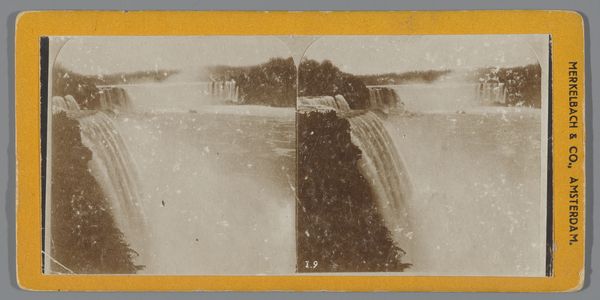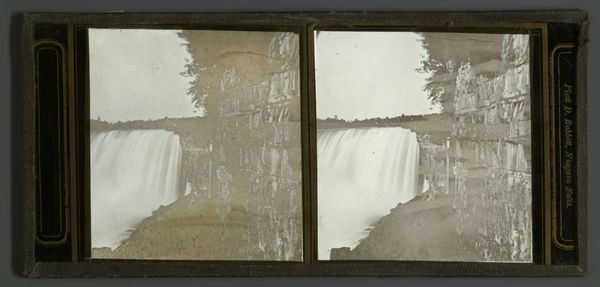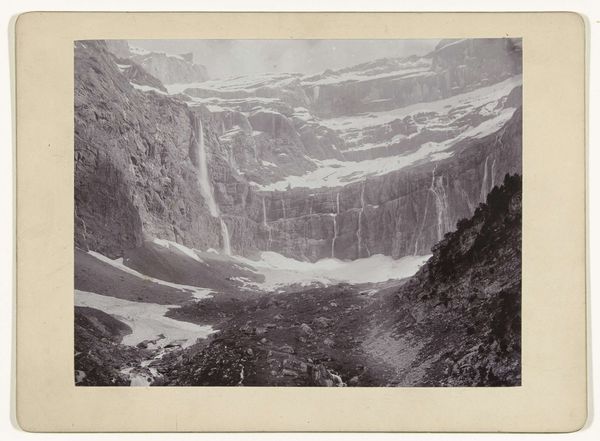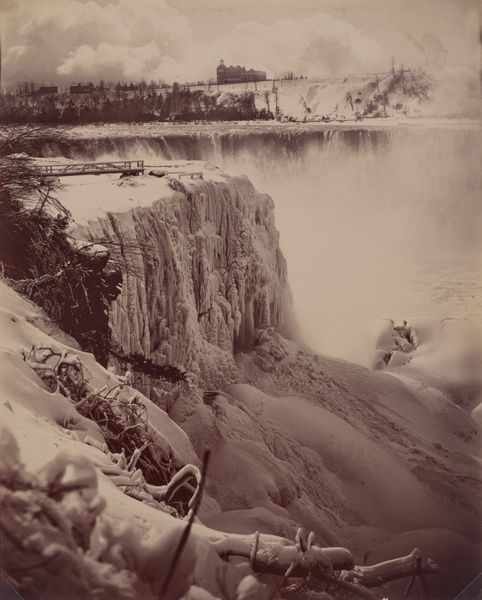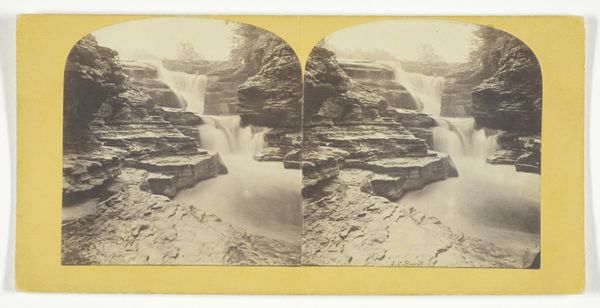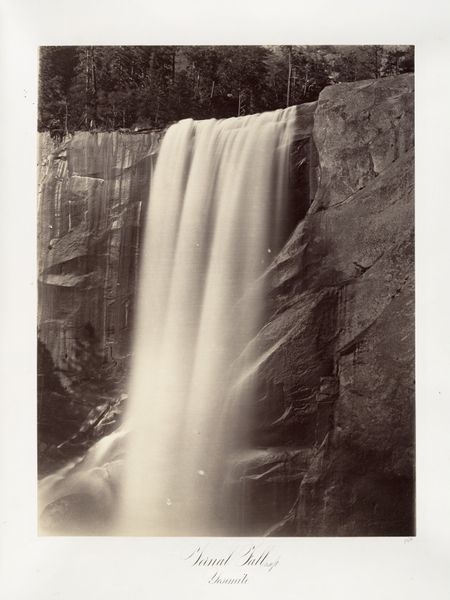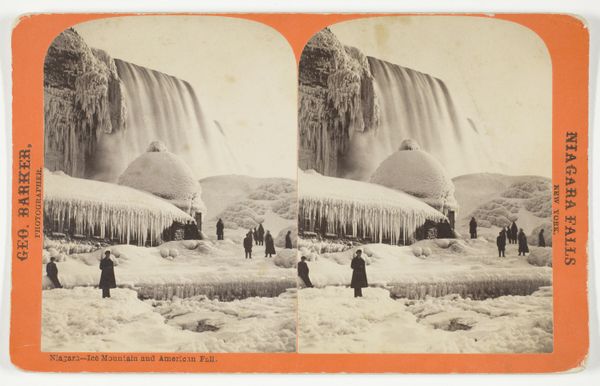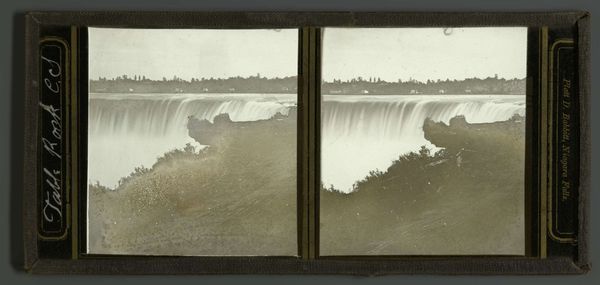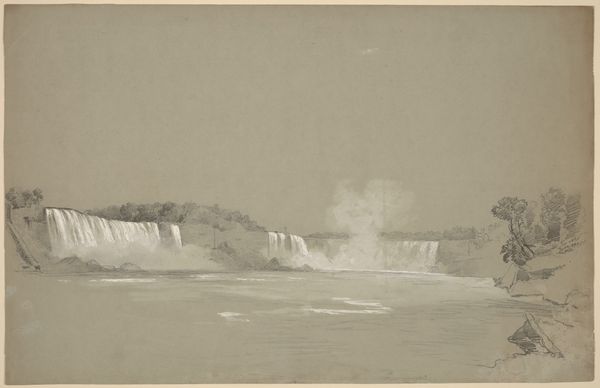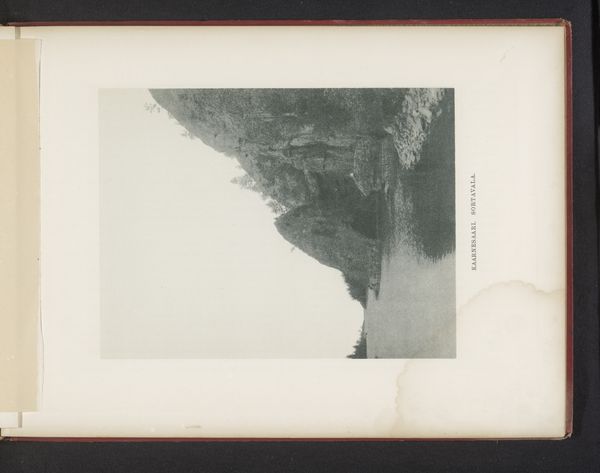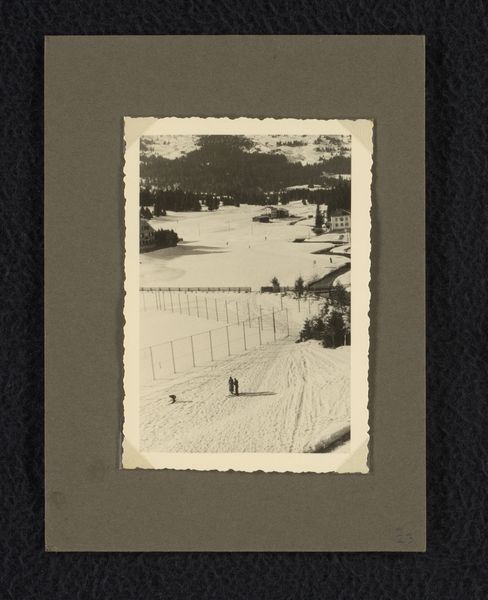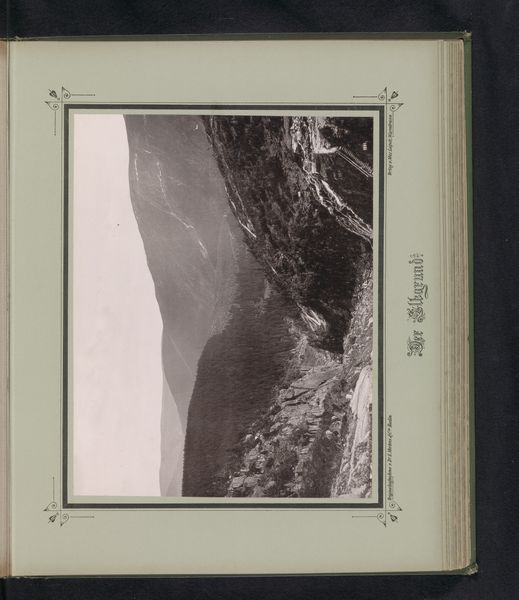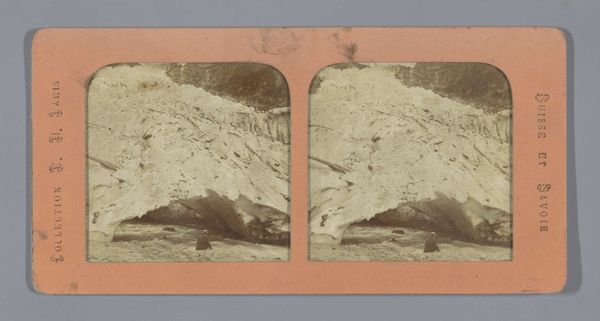
photography
#
water colours
#
landscape
#
photography
#
realism
Dimensions: image: 23.5 × 19.1 cm (9 1/4 × 7 1/2 in.) framed: 32.3 × 27.2 × 2.6 cm (12 11/16 × 10 11/16 × 1 in.)
Copyright: National Gallery of Art: CC0 1.0
Curator: This compelling photograph, likely taken in the 1870s, offers a dramatic perspective of Niagara Falls. It's attributed to Platt D. Babbitt, a name synonymous with early Niagara photography, and is titled "American Falls from Luna Island". Editor: Brrrr, I can feel the spray just looking at it! It's a stunning, almost otherworldly depiction. The limited tonal range gives it such a melancholic feel—as if the very air is heavy with moisture. It feels somber to me. Curator: Absolutely. Babbitt capitalised on the romantic allure of the Falls. He built his business photographing tourists against this very backdrop, democratising the experience of capturing this iconic landmark. Imagine how revolutionary accessible photography was then. Editor: To think, he was crafting a brand around Niagara even then! But it's more than just a tourist trap picture, don't you think? Look how he frames the cascade—the way the frozen crest dominates the composition! It’s an epic stage set! What are some things to consider about the social and institutional environment from the time the photograph was created? Curator: Good eye! During this era, Niagara Falls was transforming into an industrial and tourist mecca. Babbitt's studio existed in this nexus, a blend of commercial enterprise and artistic representation shaping public perception. Railroad expansion really fueled his audience, literally! Editor: So, his success mirrors broader shifts, the rise of both the tourist economy and, let's be honest, the aestheticization of nature itself, transforming landscape into commodity. The falls is imposing. I am also intrigued by the texture – what does it say? Curator: Definitely. The photograph captures a powerful sense of movement frozen in time. You can almost hear the roar! And it also subtly prompts considerations of nature, commodification, and human interaction, even though the natural force dominates in the shot itself. Editor: Indeed! In the image I observe how the perspective of Niagara Falls becomes one that not everyone is afforded in modern times and prompts one to wonder of it's history. Curator: Precisely. So the photo isn't merely a pretty picture but an evocative artifact. Editor: I have had the distinct impression that even if I can see a glimpse of that world frozen into a picture, time always moves onward to create more. Thank you.
Comments
No comments
Be the first to comment and join the conversation on the ultimate creative platform.
